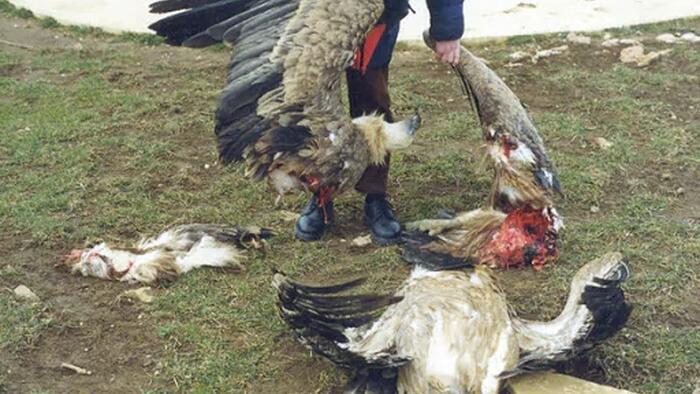Copyright DefenseNews.com

The Air Force told lawmakers it needs a fighter fleet of 1,558 manned, combat-coded fighters to carry out and sustain operations at a low risk, nearly 300 more than it has now. In an August report signed by Air Force Sec. Troy Meink, which was obtained by Defense News, the service said it needs to “grow to minimize risk” over the next decade, as it focuses on modernizing its current fifth-generation and legacy fighter fleets. Congress ordered the Air Force to produce this report, titled “Long-Term USAF Fighter Force Structure,” as part of the 2025 National Defense Authorization Act. An Air Force official, during a conversation with reporters Thursday, acknowledged this is an aspirational plan that it couldn’t achieve without a significant budget boost. Its primary purpose, the official said, is to send a message to decision makers on what the Air Force needs to carry out all its missions — and if that’s not in the cards, to prepare for scenarios where not all of the service’s desired missions are achievable. “There is insufficient top line, currently, to cover everything that we want to do,” the official told reporters. “We need more Air Force, and this [report] backs it up on the [tactical air] side,” the official said later. “More Air Force is possible. It’s just a matter of whether it prioritizes highly enough, among all the other various things that are required within the department.” The service said it now has 1,271 combat-coded fighters, including roughly 103 A-10 Warthogs that will be largely retired by the end of fiscal 2026. That would mean growing the combat-coded fighter fleet by nearly 300 tails to bring the service’s risk down to its lowest level — and that’s even before older jets like the A-10s and F-15C head to the boneyard. For the Air Force, low risk would mean it is “very likely” to achieve its objectives, has the full capacity to source combatant commander’s requirements and has the strategic depth to fight a wide range of conflicts with limited stress. To meet objectives with medium risk — which would mean achieving objectives is “likely” — the official said the Air Force would need about 1,367 combat-coded fighters. Significant and high risk would mean the service may not or could not achieve its objectives, with forces only ready to deploy “just in time” or not ready at all, the report said. The force would face prolonged or extreme stress, it added. Achieving that growth could be easier said than done. There are multiple factors that could throw a wrench into those plans, including lawmakers not providing as much funding as the Air Force wants, industrial limitations on production and the hiccups and delays that often come with developing new military technologies. What’s more, the report said, improving the readiness and effectiveness of the Air Force’s fighter fleet, while sustaining current aircraft, carrying out its current missions worldwide, and dealing with tight budgets and modernization delays presents a challenge to the service. High stakes modernizing The Air Force is in the midst of its largest modernization effort in history, as it brings on new fighters such as the Lockheed Martin-made F-35A Joint Strike Fighter and Boeing’s F-15EX Eagle II. At the same time, it is developing an entirely new class of semi-autonomous fighter drones called collaborative combat aircraft, which will fly alongside crewed fighters, and the sixth-generation Boeing F-47, as well as updating its bomber fleet with the B-21 Raider, among other new aircraft. But getting new fighters such as the F-35 developed and fielded is “inherently risky,” the report said, with budget turmoil, technology challenges and industry delays snarling the process. This ends up forcing the Air Force to hold on to older aircraft longer than planned, which creates a vicious cycle that makes sustainment challenges worse, sucks up money that could go to new planes and delays the introduction of new capabilities. The report also said these goals are what could be met under what amounts to a best-case scenario for the Air Force. A chart in the report’s classified annex “illustrates the potential maximum fighter procurement and maximum industry production with no fiscal constraints.” In the Thursday conversation with reporters, the Air Force official said the service laid out these goals to set “the bar for what is the possibility out there.” “Achieving those numbers assumes that we would have the fiscal resources to do that,” the official said. “The message is, we’re doing our homework, and what our homework tells us is that to achieve certain risk levels, we can do that. It just takes the will to invest that way.” The report calls the F-35 “the foundation of the USAF fighter force structure,” and said the service plans to buy as many of the fighters as Lockheed Martin and other contractors can produce, and continue the jet’s modernization. The service now has roughly 500 F-35s, and eventually wants to buy a total of 1,763. A chart included in the report said industry can reach maximum F-35A production capacity, producing 100 jets per year for the Air Force, by 2030, as well as hitting a maximum production capacity of 24 F-15EXs by 2027. That could prove challenging for the Air Force. The service typically tries to buy about 48 F-35As each year. But the Pentagon’s 2026 budget proposal released over the summer called for slashing that goal in half. And after multiple delays to the F-35’s Technology Refresh 3 modernization program, an even bigger slate of upgrades called Block 4 is behind schedule and, according to a recent Government Accountability Office report, being scaled back as a result. When asked about the Pentagon’s request to buy fewer F-35s in 2026, and how that squares with the Air Force’s stated desire to dramatically increase its fighter fleet, the Air Force official pointed to the lagging development of Block 4. When the Block 4 upgrades — which will allow the F-35 to carry more weapons and boost its sensors — are ready, the service plans to ramp up its purchases of the jets, the official said. “We’re certainly encouraged by the progress that’s being made on Block 4,” the official said. “But the reality is, it’s not rolling out right now. I think that we will see that change here in the future, and when that occurs, we will have a corresponding change in what’s programmed for F-35.” The Air Force official said Lockheed Martin can now produce between 130 and 140 F-35s, of all three varieties, each year. But in the future, he said, Lockheed could curtail its production of the short-takeoff and vertical landing F-35B variant, allowing it to produce more F-35As. And if the government’s foreign military sales of F-35s changed — resulting in fewer F-35As being sold to other nations — that could create an inventory big enough for the Air Force to buy up to 100 F-35As per year, the official said. Challenges abound as fleet shifts The Air Force is also dealing with a longstanding shortage of pilots, which has been worsened by bottlenecks in the training process, limited manpower and challenges sustaining its current fleet of aircraft. The report underscores the Air Force’s plans to finish retiring all 103 remaining A-10 Warthogs by the end of September 2026, and said divestments of its aging F-15C and D fighters are almost done. The Air Force wants to keep most of its F-15E Strike Eagles, which it calls the “proven combat workhorse of the USAF fleet in every theater of operation.” But the service does plan to prune its F-15E fleet by divesting some fighters with less-capable F100-PW-220 engines, allowing it to focus resources on jets with the F-100-PW-229 engines and improve overall sustainment and mission readiness. The Air Force’s web page on the F-15E said a single 220 engine can produce 25,000 pounds of thrust, and a 229 engine can produce 29,000 pounds of thrust. Both types of engines are made by Pratt & Whitney, and each F-15 has two engines. As jets like the A-10s, older F-15s and block 30 F-16s have aged beyond their original service lives, the Air Force has had to pour more time and resources into keeping them flying. This diverts resources that could otherwise go to modernizing newer planes, the report said, and stretches depot maintenance facilities. Many of them have obsolete technology that is growing increasingly difficult and costly to maintain, while the shrinking industrial base is drying up sources of critical parts for those planes. There is one major wild card in this report, however, that the service wasn’t sure how to account for: the rise of CCAs, like the General Atomics-made YFQ-42A and Anduril’s YFA-44A that are now in testing. CCAs are intended to carry out multiple missions, including strikes against enemy targets, surveillance, jamming and other electronic warfare operations, and even serving as decoys. When they are fully operational — the Air Force wants a fleet of at least 1,000 CCAs — they will allow the service to get its missions done with fewer manned fighters, helping to burn down some of the risk it faces. But for now, the official said, it’s hard to tell how many manned fighters CCAs will be able to fill in for. CCAs “will affect the bottom line,” the official said. “We don’t know by how much at this point, but certainly that will buy down some of that requirement.”



